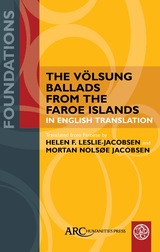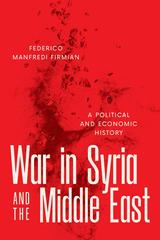3 books about Buddhism in literature
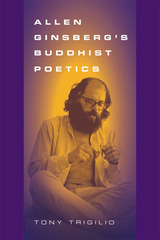
Allen Ginsberg's Buddhist Poetics
Tony Trigilio
Southern Illinois University Press, 2007
Allen Ginsberg’s Buddhist Poetics revives questions of poetics, religious authenticity, and political efficacy in Ginsberg's prophetic poetry. Author Tony Trigilio examines Ginsberg's Buddhism as an imperfect but deepening influence on the major poems of his career.
The first sustained scholarly effort to test Ginsberg’s work as Buddhist poetry, this volume goes beyond biography to contemporary critical theory and textual and historical analysis to show how Ginsberg’s Buddhist religious practices inform his poetry. Trigilio takes us through the poet’s first autodidactic struggles with Buddhism to his later involvement with highly trained teachers, as he follows the development of Ginsberg’s Buddhist poetics.
The book also considers the place of Ginsberg’s poetry in the cultural and aesthetic contexts of his career, covering the rise of an “American Buddhism”; the antiwar, drug decriminalization, and gay civil rights movements; and the shift from modern to postmodern strategies in contemporary U.S. poetry.
Allen Ginsberg’s Buddhist Poetics examines some of the most significant work produced by the poet after he had become a cultural icon and marks a new direction in the study of Ginsberg’s work. Of interest to scholars of Buddhism, American poetry, cultural studies, and Beat studies, this groundbreaking volume fills significant gaps in the scholarly criticism of Ginsberg’s spiritual poetics.
[more]
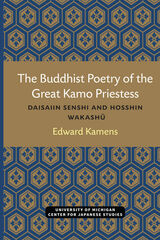
The Buddhist Poetry of the Great Kamo Priestess
Daisaiin Senshi and Hosshin Wakashu
Edward Kamens
University of Michigan Press, 1991
Senshi was born in 964 and died in 1035, in the Heian period of Japanese history (794–1185). Most of the poems discussed here are what may loosely be called Buddhist poems, since they deal with Buddhist scriptures, practices, and ideas. For this reason, most of them have been treated as examples of a category or subgenre of waka called Shakkyoka, “Buddhist poems.”
Yet many Shakkyoka are more like other poems in the waka canon than they are unlike them. In the case of Senshi’s “Buddhist poems,” their language links them to the traditions of secular verse. Moreover, the poems use the essentially secular public literary language of waka to address and express serious and relatively private religious concerns and aspirations. In reading Senshi’s poems, it is as important to think about their relationship to the traditions and conventions of waka and to other waka texts as it is to think about their relationship to Buddhist thoughts, practices, and texts.
The Buddhist Poetry of the Great Kamo Priestess creates a context for the reading of Senshi’s poems by presenting what is known and what has been thought about her and them. As such, it is a vital source for any reader of Senshi and other literature of the Heian period.
[more]
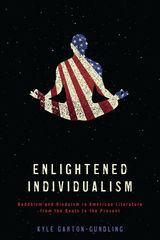
Enlightened Individualism
Buddhism and Hinduism in American Literature from the Beats to the Present
Kyle Garton-Gundling
The Ohio State University Press, 2019
Buddhism and Hinduism have spread in the US largely through texts and are now recognizable facets of American literature and culture. But the US has defined itself through goal-oriented individualism, whereas Buddhism and Hinduism teach that individuality is a delusion and thus worldly desires are misguided. Given this apparent contradiction, what can Buddhist and Hindu influences offer American identities? Enlightened Individualism explores how post-1945 American writers, including Jack Kerouac, Alice Walker, and Maxine Hong Kingston, have tried to answer this question. Playing on enlightenment as both Anglo-American liberalism and Asian mysticism, this book argues that recent American literature seeks to reconcile seemingly incompatible liberal models of individual autonomy with Buddhist and Hindu ideals of transcending selfhood.
This “enlightened individualism” uses Buddhist and Hindu philosophy to reframe American freedom in terms of spiritual liberation, and it also reinterprets Asian teachings through Western traditions of political activism and countercultural provocation. Garton-Gundling argues that even though works by Kerouac, Walker, Kingston, and others wrestle with issues of exoticism and appropriation, their characters are also meaningfully challenged and changed by Asian faiths. These literary adaptations, then, can help Americans reenvision individualism in a more transcendent and cosmopolitan context.
This “enlightened individualism” uses Buddhist and Hindu philosophy to reframe American freedom in terms of spiritual liberation, and it also reinterprets Asian teachings through Western traditions of political activism and countercultural provocation. Garton-Gundling argues that even though works by Kerouac, Walker, Kingston, and others wrestle with issues of exoticism and appropriation, their characters are also meaningfully challenged and changed by Asian faiths. These literary adaptations, then, can help Americans reenvision individualism in a more transcendent and cosmopolitan context.
[more]
READERS
Browse our collection.
PUBLISHERS
See BiblioVault's publisher services.
STUDENT SERVICES
Files for college accessibility offices.
UChicago Accessibility Resources
home | accessibility | search | about | contact us
BiblioVault ® 2001 - 2025
The University of Chicago Press



